New Zealand’s economy remains in a deepening funk.
The economy has already entered a technical recession:
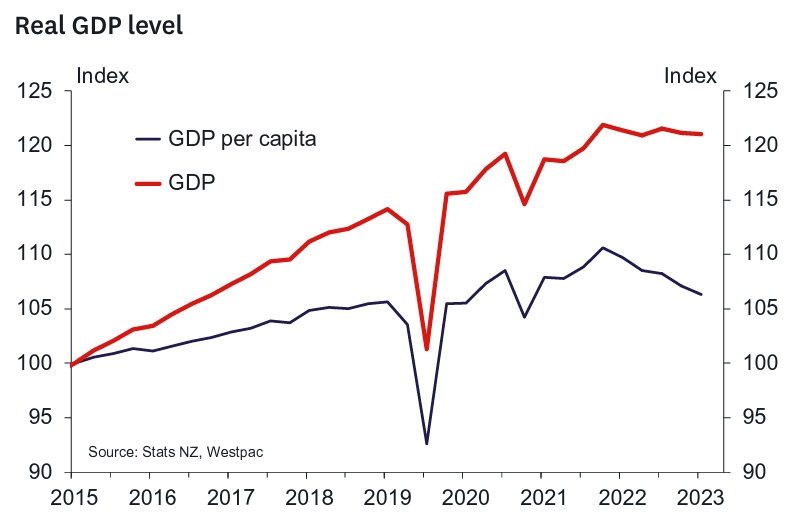
And per capita outcomes are significantly worse given New Zealand’s population has grown by 2.7%:
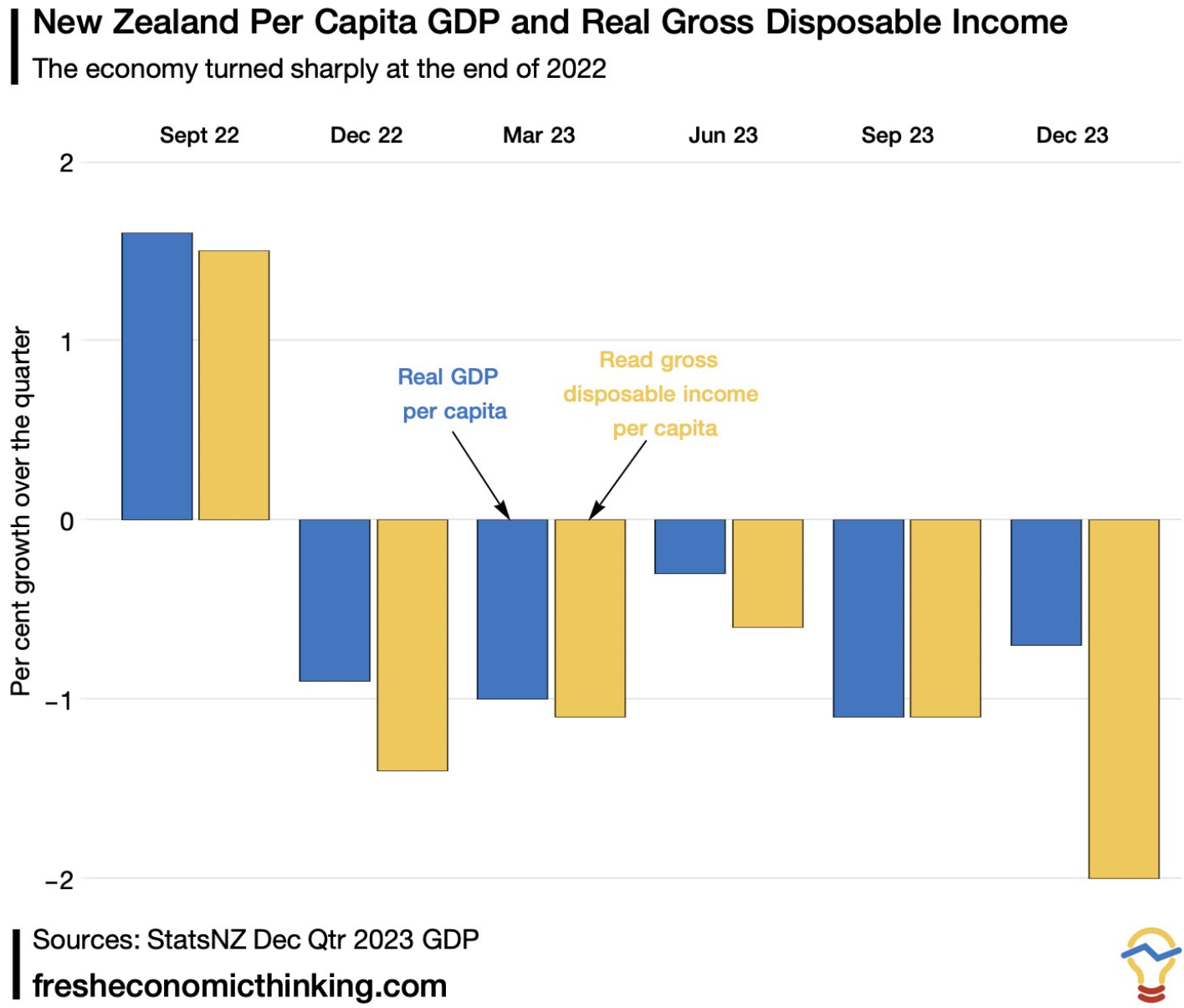
Retail spending has dropped considerably in real, population-adjusted terms:
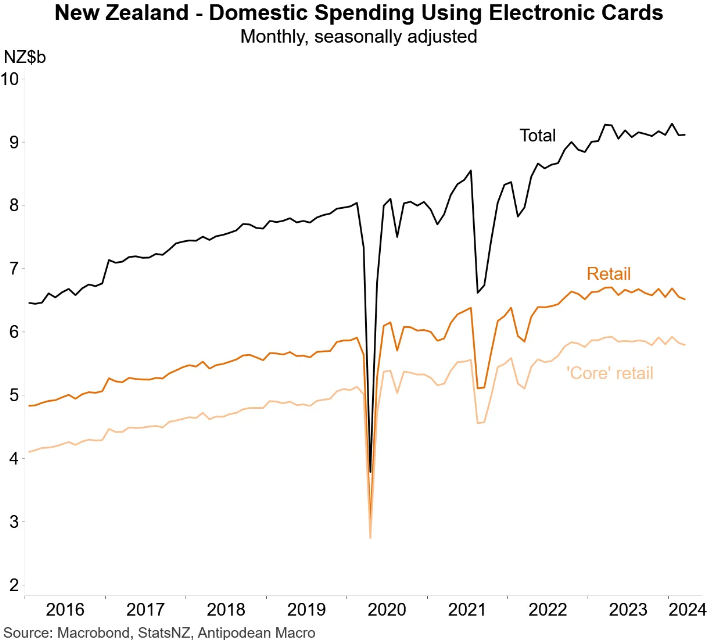
New Zealand’s labour market is slowing, with the number of applications per job ad reaching record highs, pointing to increased unemployment in the coming months:
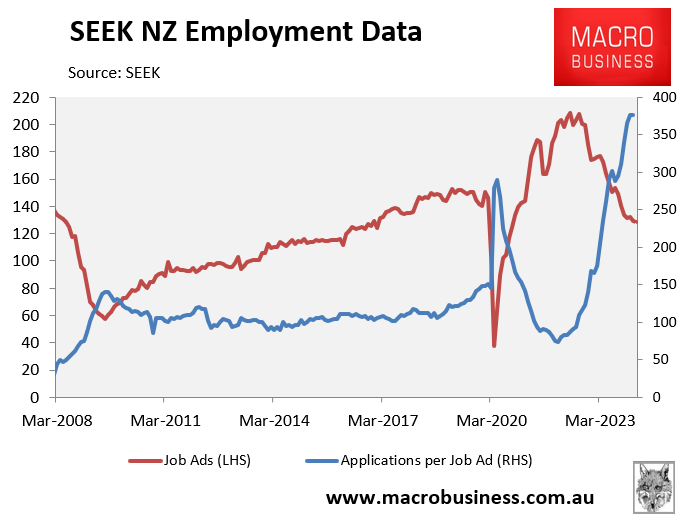
Indeed, major bank ASB predicts that New Zealand’s unemployment rate will rise to 4.3% in the March quarter when data is released later this week. This would be up from 4.0%, and the highest reading since early 2021.
The main driver will be the outpacing of labour supply growth when compared to demand.
ASB also expects that the unemployment rate will move above 5% by year end.
Meanwhile, the composite PMI suggests that New Zealand’s economic growth stalled in the first quarter:
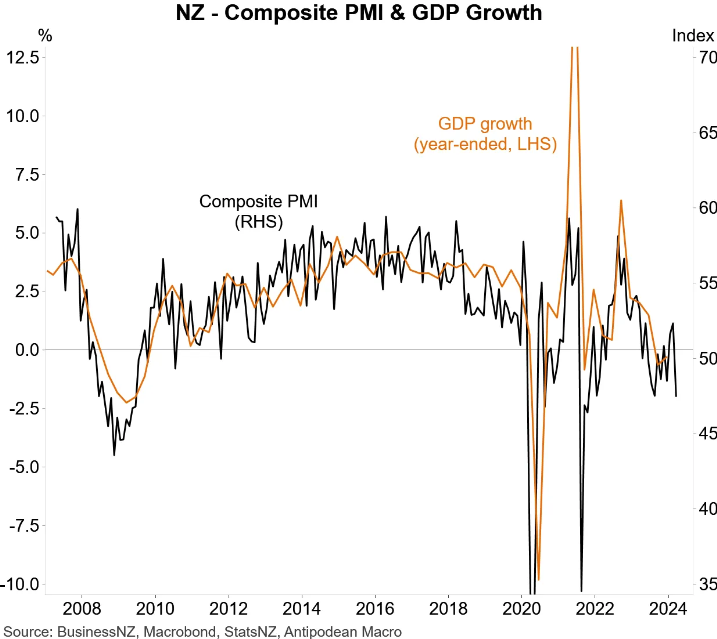
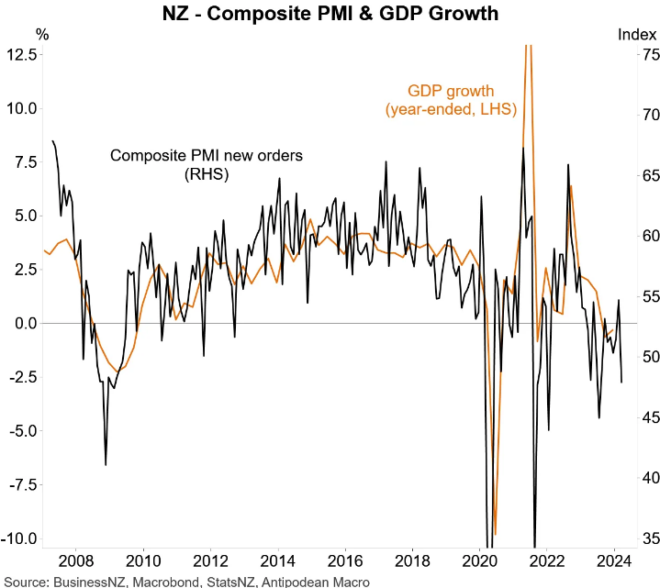
Last week, Roy Morgan released data showing that New Zealand consumer confidence fell sharply in April, suggesting the post-election rebound in sentiment is well and truly over:
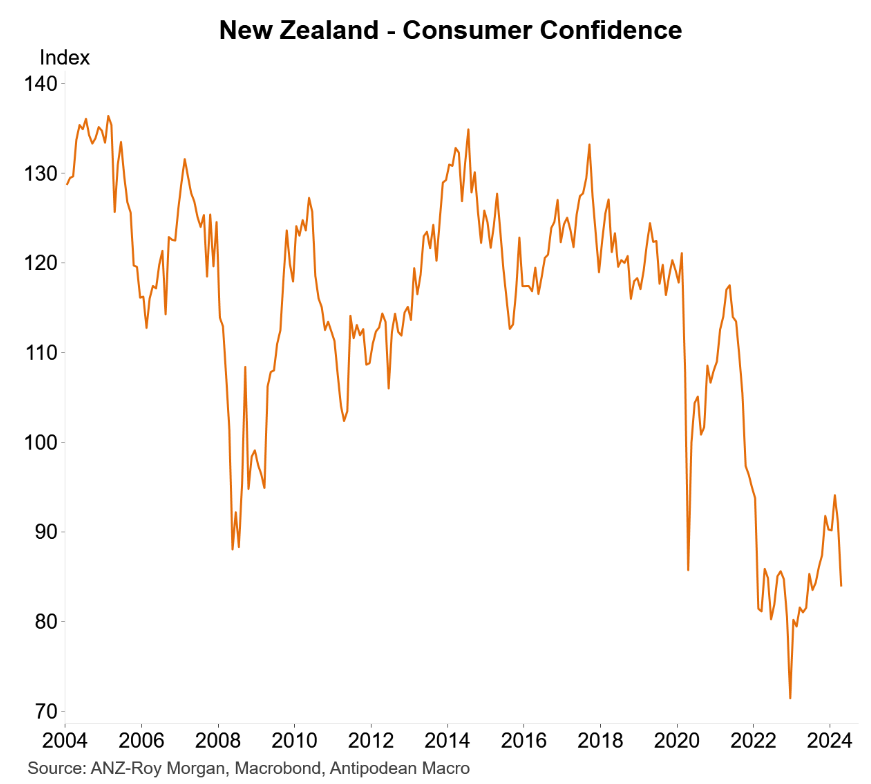
The percentage of household disposable income dedicated to mortgage repayments also continued to rise in the March quarter amid the ongoing expiry of cheap pandemic fixed-rate mortgages:
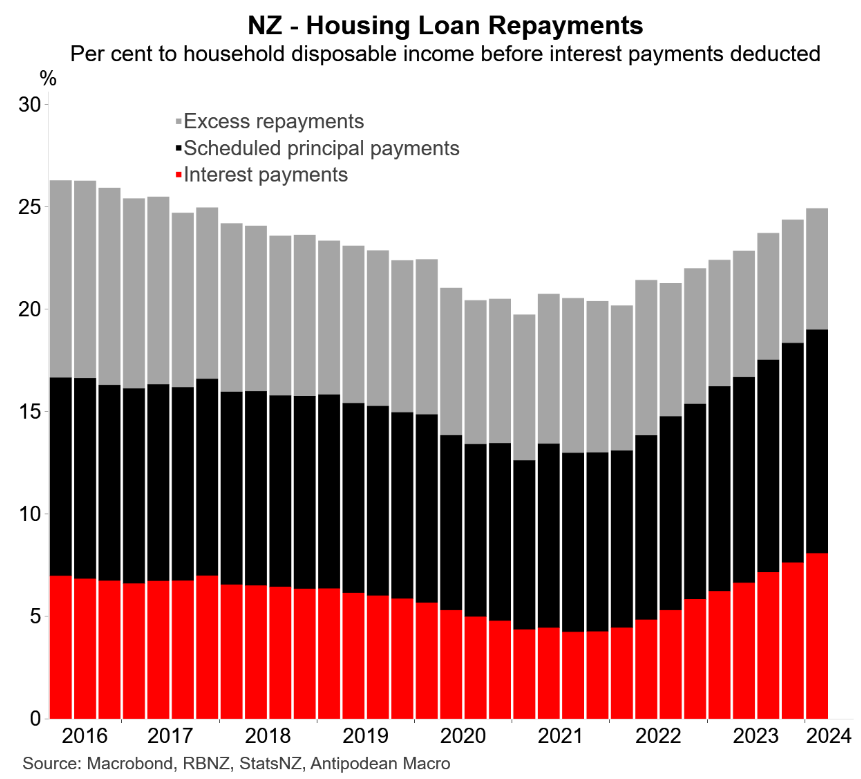
In summary, the Reserve Bank is wedged between stubborn services inflation and a recessionary economy.
The longer the Reserve Bank waits to cut rates, the deeper the economic downturn.

